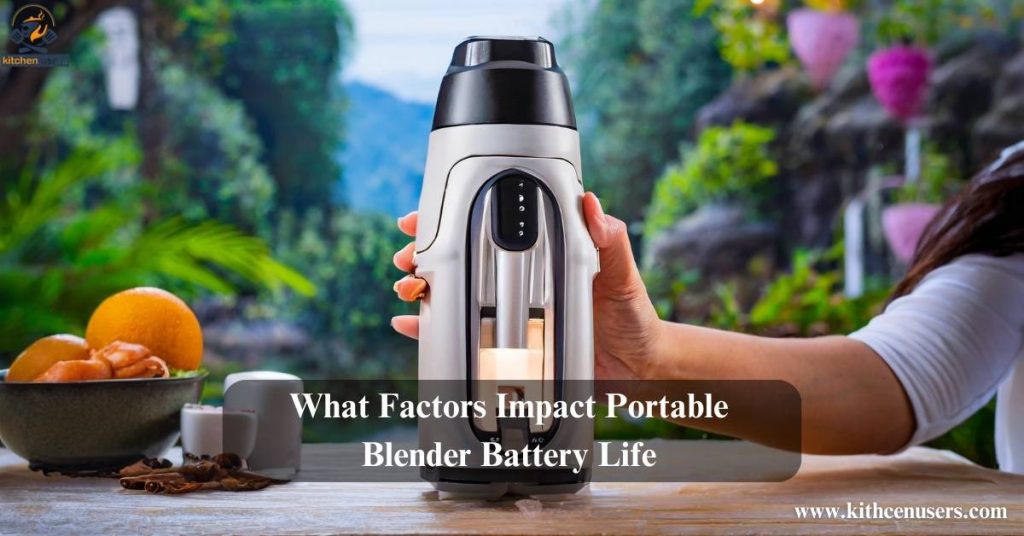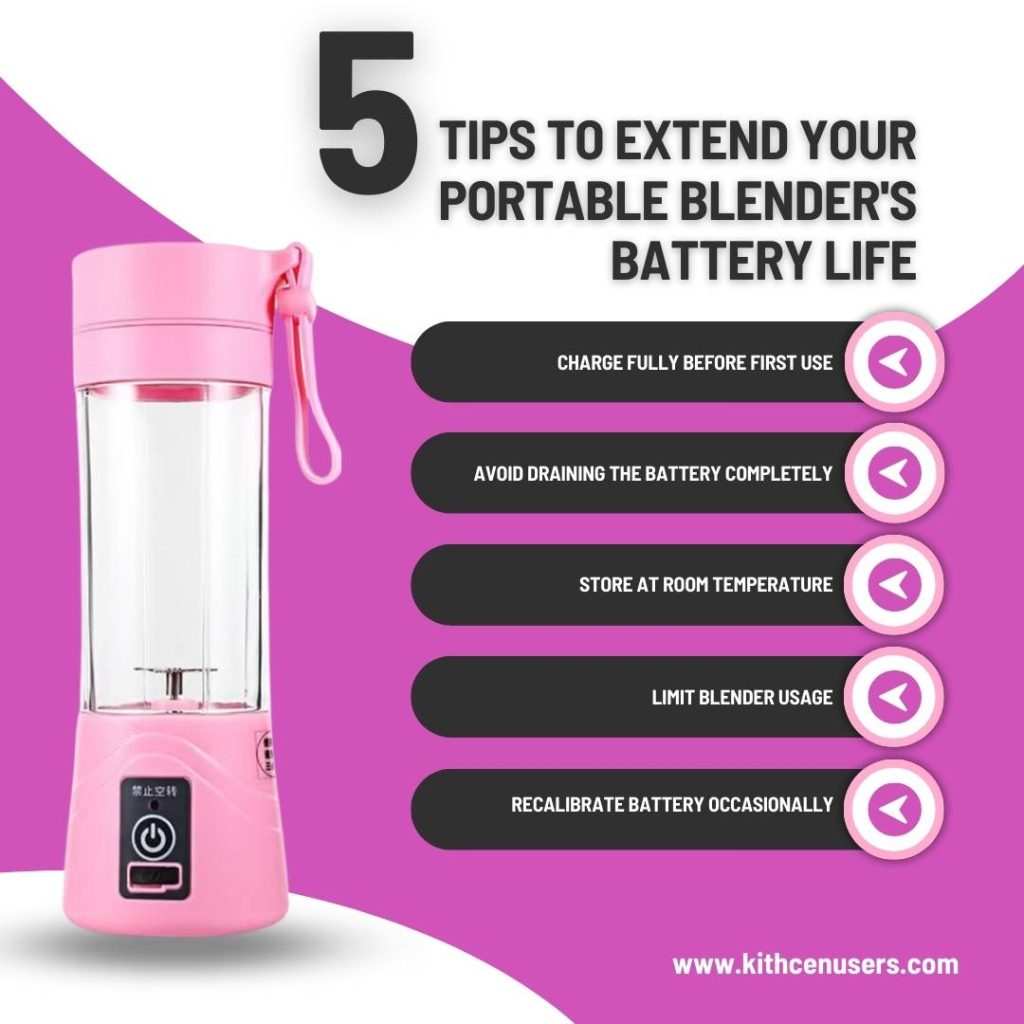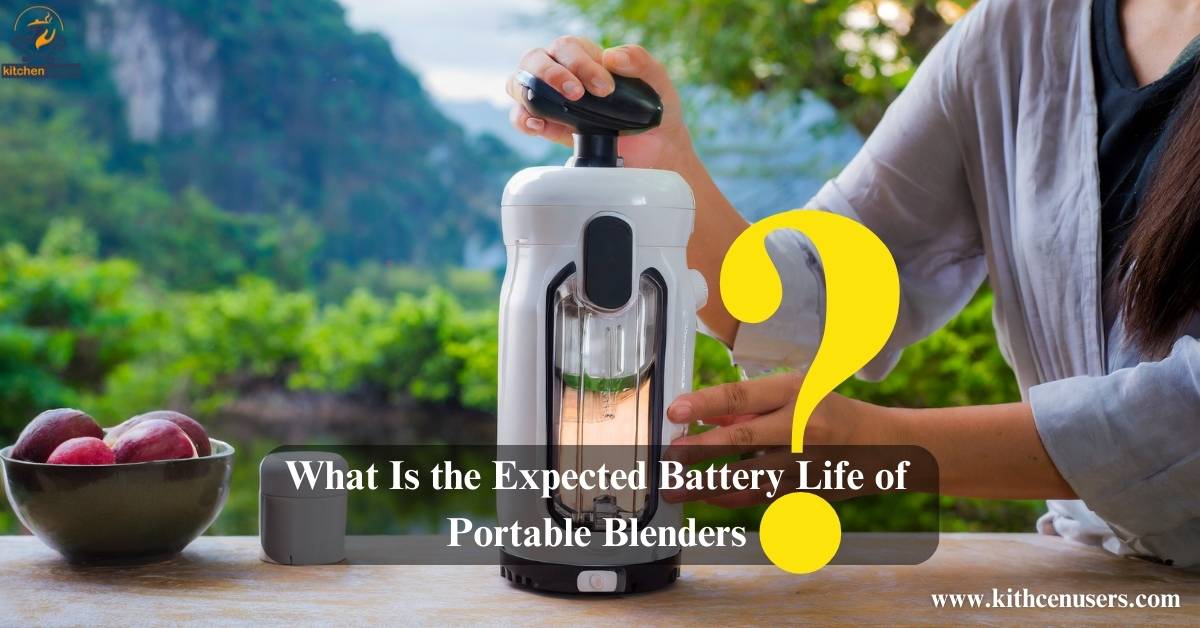As an avid smoothie maker or health-conscious individual on the go, you likely wonder about the Expected Battery Life of Portable Blenders. These compact yet powerful devices offer convenience and versatility, allowing you to quickly whip up a smoothie or light meal whenever and wherever you want.
The portability and cordless design make them run on rechargeable batteries. Consider the potential run time and how often you need to recharge. In this article, we will look at the battery life of popular portable blender models. This will help you choose the one that suits your needs and lifestyle.
Whether you’re blending once a day or a few times per week, there are options suitable for light or heavy use. Read on to find your perfect portable blending match.
What Factors Impact Portable Blender Battery Life?

Several factors determine a portable blender’s battery life and longevity.
Usage Frequency
The more often you use your portable blender, the faster its battery will drain over time. Frequent use means more charge cycles, which degrade the battery. Limiting use to 2-3 times per week can help maximize battery life.
Battery Type
Lithium-ion batteries, like those in many portable blenders, typically last 3-5 years. More advanced lithium polymer batteries can last up to 10 years. Nickel-metal hydride (NiMH) batteries usually last only 2-3 years. Choose a blender with a high-quality, long- lasting battery type.
Proper Care
How you charge and store your portable blender impacts its battery health. Fully charge before first use and avoid complete discharge. Don’t leave it charging for more than a few hours after it’s fully charged. When storing, keep the battery at least partially charged and place the blender in a cool area. High heat causes battery deterioration. Try to avoid using while charging.
Usage Duration
Shorter blending times, around 30 seconds to 2 minutes, are easier on a portable blender’s battery than longer 5-10 minute cycles. If possible, avoid continuous lengthy blending which can overheat and damage the battery. Let the blender rest for a few minutes between cycles.
Properly select, care for, and use a portable blender. Its rechargeable battery will last 2-5 years before replacement. Following best practices will maximize its lifespan so you can enjoy blended beverages for years to come!
Average Battery Life Expectancy of Popular Portable Blender Models
Popular portable blender models have an average battery life that varies. The range is typically 3 to 8 years. The variation depends on quality and frequency of use. Higher-end blenders with more powerful motors and frequent use will have a shorter battery life expectancy.
Rechargeable Batteries
Most portable blenders are equipped with rechargeable lithium-ion batteries. The typical lithium-ion battery can handle 300 to 500 charge cycles before losing significant capacity. For a blender used 2-3 times per week, this equates to 3 to 5 years of typical use.
Some tips to maximize battery life include:
- 1. Avoid fully draining the battery with each use. Partial discharges are less stressful.
- 2. Do not leave the blender plugged in and charging 24 hours a day. Only recharge when the battery level drops to about 30%.
- 3. Avoid extreme heat or cold which can degrade the battery faster. Store the blender at room temperature.
Replacement Batteries
After a few years of use, if the battery life decreases significantly, you can buy a new battery for your portable blender. This will extend its useful life. Replacement lithium-ion batteries typically range from $20 to $60 depending on the model. Certain NutriBullet and Ninja models offer replacement batteries for purchase. These batteries can be bought on the company’s website or at select retailers.
A quality portable blender, with proper care and maintenance, should last 3 to 5 years. You will only need to replace the rechargeable battery then. If the base unit and blades are still functional, a new replacement battery can extend blending life.
5 Tips to Extend Your Portable Blender’s Battery Life

To maximize the lifespan of your portable blender’s battery, follow these tips:
Charge Fully Before First Use
Make sure to fully charge your portable blender before using it for the first time. Fully charging it will establish the battery’s full capacity accurately. This will ensure the most precise battery level readings in the future.
Avoid Draining the Battery Completely
Most portable blenders use lithium-ion batteries. These batteries can handle occasional full discharge. However, it is best for the battery’s health to avoid completely draining it as much as possible. Recharge your blender once the battery level reaches 20-30% to keep it topped off. Frequently draining the battery all the way down can reduce its overall capacity over time.
Store at Room Temperature
For the longest battery life, store your portable blender at normal room temperature when not in use. Extreme temperatures can harm the battery. Avoid leaving your blender in very hot places like inside a vehicle on a hot day. Also avoid storing it in freezing temperatures.
Limit Blender Usage
Only use your portable blender when needed to accomplish a task like making a smoothie. Don’t overuse the blender. It creates too much heat and shortens the battery life. Finish making your drinks or food items and then turn the blender off until the next use.
Recalibrate Battery Occasionally
Every few months, fully drain your portable blender’s battery. Then, recharge it to 100%. This will help recalibrate the battery level indicator. Improving the accuracy of the battery percentage is possible. It can be shown on the blender’s display or charging base. Recalibrating the battery a few times per year will help. This way, you can better gauge when it’s time to recharge the blender.
Conclusion
You reviewed popular portable blender models and their battery life. Now, you know what to expect from this small appliance. Battery technology is advancing and improving over time. As a result, newer blenders may have slightly longer run times compared to models from a few years ago.
However, most portable blenders have an operating time of 30-60 minutes per charge. Regular use requires multiple charges for larger blending tasks. Choosing a model with a bigger battery gives you more flexibility. It also adds convenience to your experience. A quality portable blender can last for several years with care. You can use it to make smoothies, dips, and sauces anywhere.

Tammy E. Edison is a distinguished specialist in the world of kitchen appliances, and she is proud to be a part of the dynamic team at kitchenusers.com. With a background in engineering and a passion for culinary innovation, Tammy E. Edison has established herself as a go-to expert for all things related to kitchen appliances technology.


